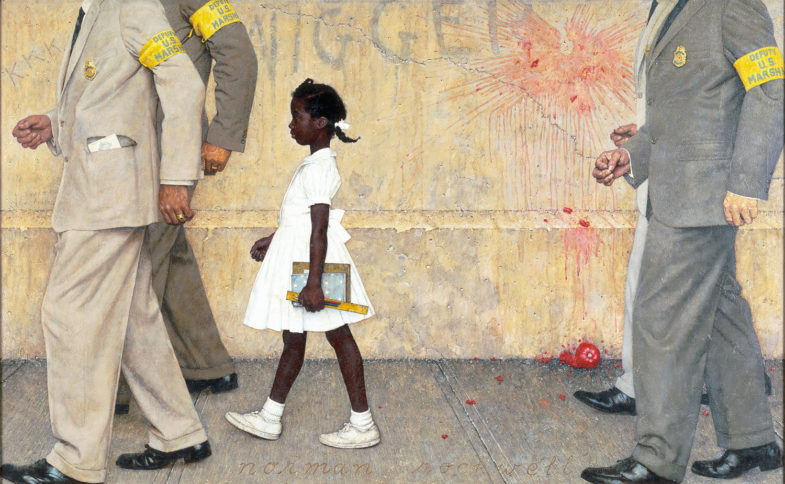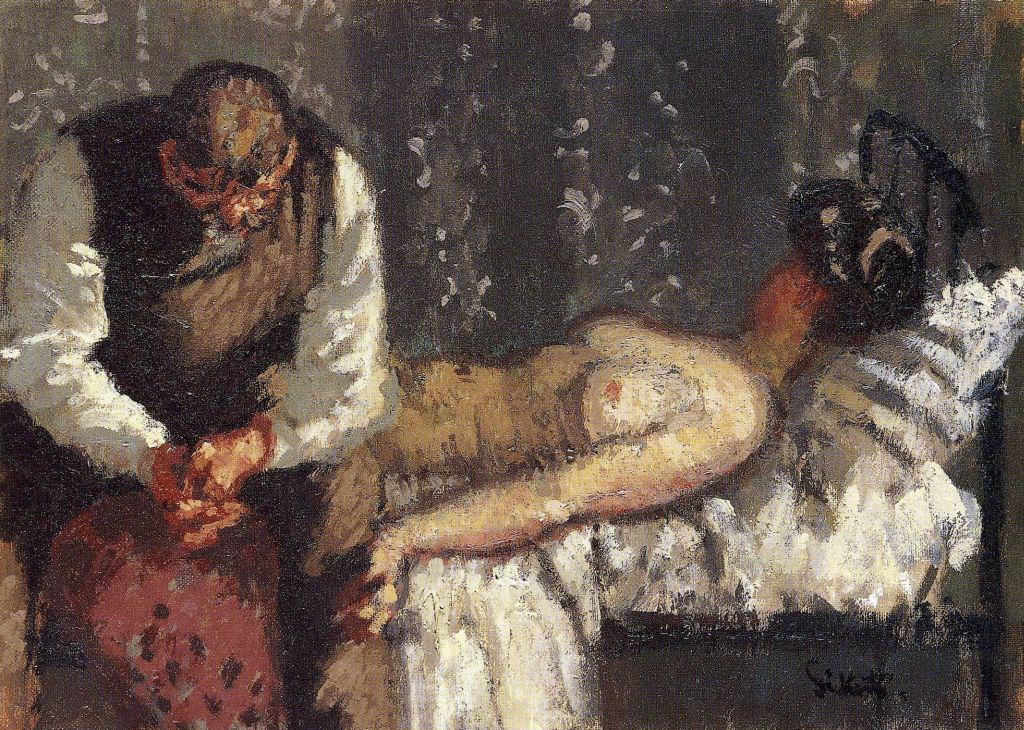“The Problem We All Live With” is one of Norman Rockwell’s most famous paintings, and has been discussed frequently by so many others that I encourage everyone to seek out those articles. That said, it being one of my favorite pieces, I hope I have something to add to the cacophony of voices in the choir.
Namely, that this painting is as much about us as it is about the brave girl.
What it says about us is not terribly nice, as it is a powerful look into the mirror. It is not a direct mirror, of course, to what we look like or what our own situations might be. We are not intended to be a part of the young girl’s powerfully courageous act. Rockwell centers our view on the girl, and he certainly hoped that we would feel for her. Despite that, we cannot feel her strength and determination to set things right, to forge a path of righteousness.
We aren’t even on the side of the determined U.S. Marshals, Rockwell saw to that. The men walk with a rhythmic cadence, clearly in the same beat. It is a strong current that we will never be able to cross, we can only watch it go by. Rockwell used masterful composition to add drama and a sense of movement to the scene, and yet kept the focus seemingly on the little girl most of all.
Except, that focus is not on the girl, or the marshals, or even the terrible slur painted on the wall. The focus is on the stain of the tomato left on the wall, and the remnants of it on the ground. The impact splatters everywhere, and while the simple explanation is that the force was great, there is a strong inference, that, especially in the turbulent era it was painted in, it could very well be blood. It is a fresh stain, seemingly moments ago, and even without direct action Rockwell painted a dramatic sense of the tension unfolding.
The tension comes from just one source: us. We are the problem we all live with.
We aren’t just visitors here, watching this girl and her protectors go by. It is very clear that the tomato, and its inference, came from the direction of the viewer. Rockwell meant for us to be the crowd, to be the ones throwing around racial slurs. We are the ones threatening this brave girl who simply wants to go to school. We are the ones throwing tomatoes, the ones who have failed to recognize that we, and not those looking for change, are the problem.
The challenge of Rockwell’s painting is not just in showing the horror and evil acts committed in the civil rights movement. His painting “Murder in Mississippi”puts the viewer in the role of watching the horrific events unfold in a shocking way. “The Problem We All Live With” puts us into the narrative, no longer on the fence but the ones actually making choices.
Rockwell turns the horror of racism back on ourselves, to show that tolerance and compassion is something that might start with a courageous girl walking to a new school. But the horror of racism only ends when we, the mob, change who we are and who we want to become.
See previous editions and subscribe to new articles here.
References
Link: An important symbol for civil rights
Link: Obama-era White House exhibition
Link: New perspectives on the artwork
The Problem We All Live With
Norman Rockwell
1964. Oil on canvas
36″ x 58″
Story illustration for Look Magazine, January 14, 1964.
Norman Rockwell Museum, Stockbridge, Massachusetts



